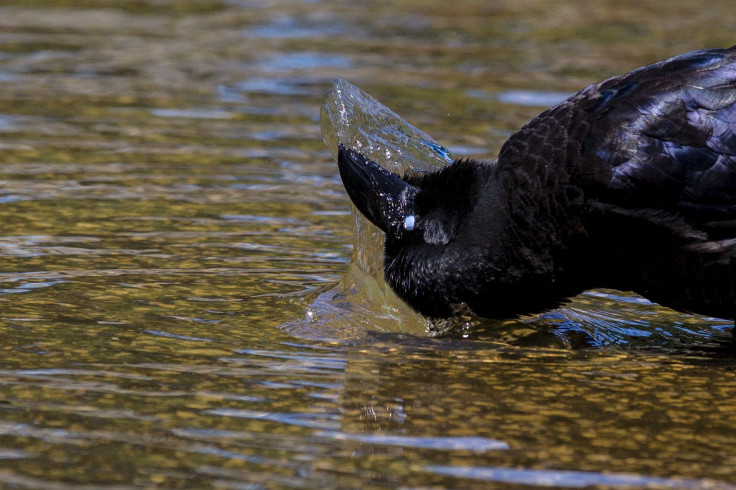Hawaiian Crows Used Tools In The Wild, Study Shows

In a discovery that accorded more brainpower to birds than previously thought, researchers in New Zealand found in 2002 that New Caledonian crows made tools to forage for food, and also passed on the knowledge for the craft to other individuals, even across generations. These birds, whose tool use is comparable to or better than most primates, have long been thought to have complex cognitive ability whose evolutionary origins are largely unknown.
A new discovery involving Hawaiian crows (Corvus hawaiiensis), however, could help with improving our understanding of the tool-making behavior exhibited by New Caledonian crows (Corvus moneduloides).
Researchers from Hawaii, California and the United Kingdom studied C. hawaiiensis, or ‘Alalā, which went extinct in the wild over 10 years ago. Even though they studied specimens in captivity, they found that “at least two lines of evidence suggest that tool use is part of the species’ natural behavioural repertoire: juveniles develop functional tool use without training, or social input from adults; and proficient tool use is a species-wide capacity.”
It is important to distinguish between the behavior of animals in the wild and under captivity. When bred or kept in captivity, animals can be taught to perform specific tasks, which is not an indication of how they would behave had they been born and grown in their natural wild habitats.
C. hawaiiensis was identified for the study due to “its morphological and ecological similarity to the tool-using” C. moneduloides. Of the 104 birds studied, researchers found over three-quarters of them “spontaneously used tools to probe for out-of-reach food.” There was no significant difference in tool use on the basis of gender but age played an important role. Less than half of the younger birds were confirmed as tool users, compared with 93 percent of all sexually mature individuals. Most birds used tools in their first trial itself, often within minutes of getting access to the materials used in the experiment.
The birds were expected to perform six extraction tasks from a log of wood. The “birds routinely selected tools of appropriate dimensions, replaced unsuitable tools, and transported non-supplied sticks to the log.” They also modified the tools and were routinely seen manufacturing new tools from plant materials.
Both C. hawaiiensis and C. moneduloides evolved in similar environments (New Caledonia is a group of islands in the southwest Pacific Ocean) and are only distantly related, which suggests “their technical abilities arose convergently. This supports the idea that avian foraging tool use is facilitated by ecological conditions typical of islands, such as reduced competition for embedded prey and low predation risk.”
The study, titled “Discovery of species-wide tool use in the Hawaiian crow,” was published Wednesday in the journal Nature.
© Copyright IBTimes 2024. All rights reserved.











